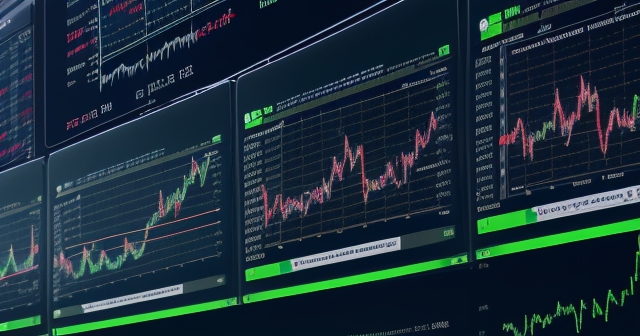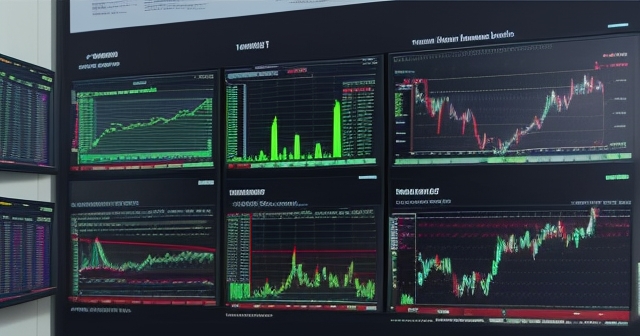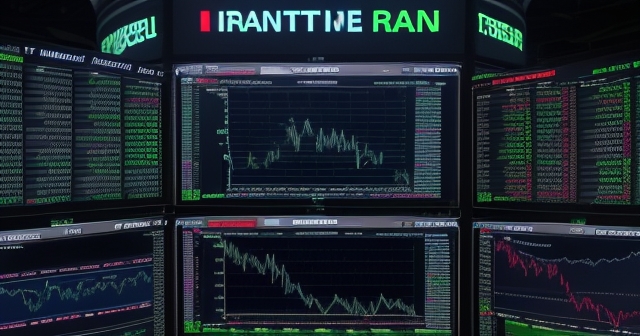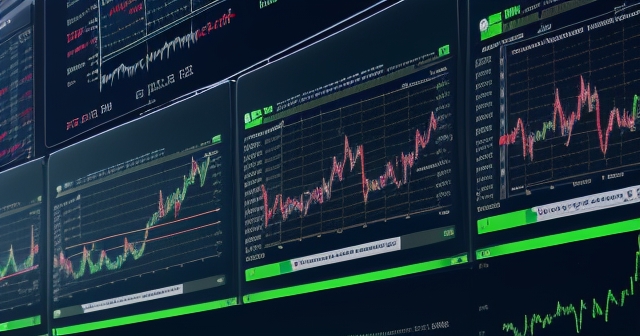Navigating the Landscape: Understanding MiFID II and MiFIR in EU Financial Markets
Welcome. As you venture into the world of trading and financial markets, whether as a beginner seeking foundational knowledge or an experienced hand looking to deepen your technical understanding, encountering the regulatory framework is inevitable. Today, we turn our attention to a cornerstone of financial regulation within the European Union: the Markets in Financial Instruments Directive, specifically its successor, MiFID II, and its accompanying regulation, MiFIR. These aren’t just acronyms; they represent a profound shift in how financial markets operate, aiming to create a safer, more transparent, and more efficient environment for everyone involved.
Think of financial markets as a complex ecosystem. Without clear rules, this ecosystem can become chaotic, opaque, and prone to instability. MiFID II and MiFIR were designed precisely to impose structure, clarity, and accountability. They are not static rules but dynamic instruments that evolve alongside the markets themselves, adapting to new technologies, instruments, and trading practices. Understanding their purpose, scope, and impact is crucial for anyone participating in EU financial markets, from the largest investment bank to the individual retail trader.
In this guide, we will explore the journey of these regulations, dissect their core principles of transparency and investor protection, examine their impact on market structure and participants, and touch upon how they are adapting to the future, including the burgeoning world of crypto-assets. By the end, you should have a solid grasp of what MiFID II and MiFIR mean for you and the markets you trade in.

The Genesis: From MiFID’s Foundations to MiFID II’s Expansion
Our story begins with the original Markets in Financial Instruments Directive (MiFID), first drafted in 2004 and entering into force across the European Union in 2007. Its primary objective was to standardize regulatory practices across EU member states, particularly concerning investment services and activities involving stocks. MiFID introduced key concepts like client classification (retail, professional, eligible counterparty) and rules around best execution and conflicts of interest. It was a significant step towards integrating Europe’s financial markets.
However, the global financial crisis of 2008 revealed significant weaknesses and gaps in the existing regulatory framework. Trading activities had become more complex, extending beyond traditional exchanges into less transparent venues like Over-the-Counter (OTC) markets and ‘dark pools’. New trading strategies, such as algorithmic and high-frequency trading (HFT), were emerging, bringing both efficiency and potential risks. Furthermore, the scope of regulated instruments needed to broaden significantly beyond just equities to encompass a wider range of financial products.
Recognizing these challenges, the European Commission initiated a review, leading to the development of MiFID II and the Markets in Financial Instruments Regulation (MiFIR). This successor legislation was enacted in 2014 but, due to its complexity and the significant changes required by the industry, its implementation was delayed, finally coming into force on January 3, 2018. MiFID II and MiFIR represent a far more ambitious and comprehensive attempt to regulate EU financial markets compared to their predecessor.
While the original MiFID laid important groundwork, MiFID II fundamentally recast the regulatory landscape. It dramatically expanded the scope of instruments, venues, and activities covered, significantly increased transparency requirements, and reinforced investor protection measures. It was a direct response to the lessons learned from the financial crisis, designed to prevent future instability and ensure markets function fairly and efficiently for all participants across the EU financial markets.

The Mechanics: MiFID II (Directive) and MiFIR (Regulation) Working Together
Understanding MiFID II and MiFIR requires recognizing their distinct legal natures within the EU framework and how they operate in tandem. MiFID II is a Directive, meaning it sets out goals and principles that EU member states must incorporate into their national laws. This allows for some degree of flexibility in how the rules are implemented at a country level, provided the core objectives of the Directive are met.
In contrast, MiFIR is a Regulation. Regulations are directly binding and applicable in all EU member states without needing national implementing measures. Think of a Directive as setting the destination and key landmarks, while a Regulation provides the specific, mandatory route. This difference is crucial for areas requiring absolute uniformity across the Union, such as transaction reporting and certain transparency requirements.
MiFIR complements MiFID II by laying down detailed, binding rules that underpin the Directive’s objectives. For instance, while MiFID II mandates enhanced transparency for financial instruments and trading venues, MiFIR specifies the exact data that must be reported, to whom it must be reported (e.g., Approved Reporting Mechanisms – ARMs), and within what timeframe (often T+1, or Trade Date + 1 day). It also contains specific rules regarding non-discriminatory access to trading venues and clearing houses, and post-trade transparency for non-equity instruments.
Together, MiFID II and MiFIR form a robust, integrated regulatory framework. MiFID II provides the broader principles and conduct rules for investment firms, while MiFIR provides the granular, legally binding requirements, particularly in areas like market structure, transparency, and transaction reporting. This dual approach allows for both overarching goals set by the Directive and precise, harmonized implementation across the EU’s diverse financial landscape through the Regulation.

Pillar 1: Enhancing Market Transparency Through Stringent Rules
Transparency is a cornerstone of MiFID II and MiFIR, aiming to make financial markets easier to understand and monitor, reducing opportunities for manipulation and ensuring fair pricing. The regulations significantly expanded the scope of transparency requirements compared to the original MiFID, applying them not only to equities but also to a wide range of non-equity instruments like bonds, derivatives, structured finance products, and emission allowances.
This enhanced transparency is mandated at two key stages:
Pre-Trade Transparency: Before a trade is executed, information about potential trading interest (like bid and offer prices and volumes) must be made public. This applies to trading venues (Regulated Markets, MTFs, and OTFs) and, under certain conditions, to firms dealing over-the-counter (OTC). The goal is to allow market participants to see available prices and liquidity before making a trade decision, promoting price formation and competition.
Post-Trade Transparency: After a trade has occurred, details of the transaction (price, volume, time) must be published as quickly as possible. For instruments traded on regulated venues, this information is disseminated rapidly. For OTC trades, firms must report the details to an Approved Publication Arrangement (APA) for public disclosure. This allows market participants to see what prices trades are being executed at, helping them assess the fairness of their own execution and overall market levels.
MiFID II and MiFIR also tackled the issue of ‘dark trading’ – trading that occurs away from transparent venues, such as within dark pools or through bilateral OTC deals, where pre-trade information is not publicly available. While dark pools can serve a purpose for executing very large orders without disrupting the market price (known as ‘large in scale’ trades), MiFID II introduced caps on the amount of trading that could occur in dark pools for specific instruments, pushing more volume onto transparent platforms.
Furthermore, the regulations place significant emphasis on transaction reporting. Investment firms must report detailed information about every transaction they execute in MiFID-covered instruments to their National Competent Authority (NCA), usually via an Approved Reporting Mechanism (ARM), by the close of the following business day (T+1). This data includes details about the instrument, price, volume, trading time, buyer, seller, and whether it was executed on a venue or OTC. This vast dataset allows regulators to monitor market activity, detect potential market abuse, and gain a comprehensive view of trading flows.
Despite these requirements, accessing and aggregating this dispersed pre- and post-trade data has been a challenge. To address this, recent amendments under MiFIR, adopted in February 2024, aim to improve market data transparency through the introduction of EU-level ‘consolidated tapes’. These are intended to aggregate real-time trading data from all venues and reporting entities into a single, comprehensive feed, making it easier and cheaper for all market participants, including smaller firms and investors, to access a complete view of the market.
Pillar 2: Strengthening Investor Protection and Fair Conduct
Investor protection is another fundamental pillar of MiFID II, designed to ensure that investors, particularly retail clients, are treated fairly, receive suitable advice, and fully understand the costs and risks associated with their investments. The regulations impose strict requirements on investment firms regarding their conduct and services.
A core element is the concept of client classification. MiFID II categorizes clients into three main groups:
- Retail Clients: These are individual investors or small entities generally presumed to have the least knowledge and experience in financial markets. They receive the highest level of regulatory protection.
- Professional Clients: These are clients who possess the experience, knowledge, and expertise to make their own investment decisions and properly assess the risks involved (e.g., certain large companies, institutional investors). They receive a lower level of protection than retail clients.
- Eligible Counterparties: These are the most sophisticated market participants (e.g., banks, large investment firms) who trade on a principal-to-principal basis. They receive the lowest level of protection under MiFID II, as they are expected to have extensive expertise and equal bargaining power.
Investment firms must properly classify their clients and tailor the level of protection and the information provided accordingly. For retail clients, this means comprehensive disclosure, rigorous suitability and appropriateness tests (to ensure products offered match the client’s knowledge, experience, financial situation, and investment objectives), and clear communication.
MiFID II also strengthens the obligation for firms to act in the client’s best interests. This goes beyond simply achieving the best price for an execution; it requires considering the total cost, speed, likelihood of execution and settlement, and other factors relevant to the specific order and financial instrument. Firms must have policies and procedures in place to demonstrate they consistently strive for best execution and disclose their execution venues and policies to clients.
A significant change under MiFID II was the requirement to ‘unbundle’ the costs of investment research from execution costs. Historically, asset managers might receive research “for free” from brokers in exchange for directing their trading business to them – a practice that could create conflicts of interest and obscure the true cost of both services. MiFID II mandates that asset managers must pay for research separately, either from their own resources or via a specific research payment account funded by client fees, ensuring the cost is transparent and the research is genuinely valuable and not simply tied to trading volume.

Furthermore, MiFID II imposes restrictions on inducements – payments or benefits received by investment firms from third parties (like product providers) in connection with providing services to clients. Such inducements are generally banned unless they are designed to enhance the quality of the service to the client and do not impair the firm’s duty to act in the client’s best interests. This rule aims to prevent conflicts of interest where a firm might recommend a product not because it’s best for the client, but because the firm receives a payment.
Addressing another potential conflict, recent MiFIR/MiFID II amendments adopted in February 2024 include a general ban on Payment for Order Flow (PFOF). PFOF is a practice where brokers receive payments from market makers or trading venues for directing client orders to them. Regulators view PFOF as problematic because it creates a conflict of interest, potentially incentivizing brokers to prioritize their own revenue from these payments over achieving the absolute best execution outcome for their clients. The ban is set to be phased in by June 2026.
Understanding these protection levels is vital when choosing a platform, especially if you are considering trading instruments like CFDs or forex derivatives, which fall under MiFID II’s scope. If you are considering starting forex trading or exploring more CFD products, Moneta Markets is a platform worth considering. Originating from Australia, it offers over 1000 financial instruments, suitable for both beginners and professional traders.
Reshaping Market Structure and Trading Practices
MiFID II significantly altered the landscape of trading venues in the EU, promoting regulated platforms and increasing scrutiny on complex trading practices. Prior to MiFID II, much trading, especially in non-equity instruments, occurred bilaterally or on less regulated systems. MiFID II aimed to bring more trading onto transparent, regulated multilateral systems.
The regulations solidified the framework for different types of trading venues:
- Regulated Markets (RMs): Traditional exchanges (like the London Stock Exchange or Euronext) with the highest level of regulation.
- Multilateral Trading Facilities (MTFs): Multilateral systems operating under non-discretionary rules, similar to RMs but with slightly less stringent requirements. MiFID originally defined MTFs.
- Organized Trading Facilities (OTFs): Introduced by MiFID II, these are multilateral systems for non-equity instruments (bonds, derivatives, structured products, emission allowances). Unlike MTFs, the operator of an OTF can exercise discretion over how orders are executed, allowing for voice broking or matched principal trading. This caters to the specific needs of less liquid instruments often traded OTC.
By strengthening rules and transparency requirements for these venues and imposing limitations on trading away from them (like dark pools and certain types of OTC trading), MiFID II aimed to create a more level playing field and concentrate liquidity on regulated platforms, enhancing price discovery and oversight.
Furthermore, MiFID II placed unprecedented focus on algorithmic trading and High-Frequency Trading (HFT). Recognizing the potential speed and scale of these strategies, the regulations imposed requirements on firms engaging in such trading. These requirements include:
- Developing and implementing systems and risk controls to prevent trading systems from creating disorderly markets.
- Notifying NCAs of their algorithmic trading activities and storing records of their algorithms.
- Testing their algorithms thoroughly before deployment.
- Firms providing direct electronic access (DEA) to trading venues must also have controls in place and remain responsible for trading conducted via their DEA clients.
- Trading venues themselves must implement controls to manage the risks posed by algorithmic and HFT activities, such as circuit breakers and volatility collars.
These measures reflect a regulatory effort to understand and manage the systemic risks and potential market integrity issues associated with increasingly automated and rapid trading strategies, ensuring that technological advancements contribute positively to market efficiency without undermining stability or fairness.
Expanding Horizons: Scope and Adapting to New Assets and Practices
MiFID II dramatically expanded the range of financial instruments and services under regulatory scrutiny compared to its predecessor. While MiFID primarily focused on equities, MiFID II’s scope explicitly includes a broad array of instruments such as bonds, derivatives (including FX forwards, swaps, options, futures, and CFDs), structured finance products, and emission allowances. This comprehensive coverage ensures that regulatory protections and transparency measures extend across most significant financial products traded in the EU.
The dynamic nature of financial markets, however, requires continuous adaptation of the regulatory framework. A significant recent development is the regulatory response to crypto-assets. Recognizing the growing importance and unique characteristics of this asset class, the scope of MiFID II was amended in 2022 (via Regulation (EU) 2022/858) to include crypto-assets and tokenized securities when they qualify as ‘financial instruments’ under MiFID II. This means that firms providing investment services related to these crypto-assets, such as operating a trading platform or providing investment advice, must comply with relevant MiFID II requirements.
This inclusion is complemented by the landmark Markets in Crypto-Asset Regulation (MiCA), which entered into force in June 2023 and will become fully applicable from late 2024/early 2025. While MiFID II covers crypto-assets that qualify as financial instruments, MiCA provides a comprehensive framework for a wider range of crypto-assets not covered by existing EU financial services legislation, as well as rules for crypto-asset service providers (CASPs). Together, MiFID II and MiCA create a more complete and coherent regulatory landscape for the digital finance space within the EU.
Beyond crypto, MiFID II and MiFIR continue to be refined to address other market specificities. For instance, specific rules apply to commodity derivatives to prevent market manipulation and ensure orderly pricing, including position limits and position management controls.

These expansions and adaptations demonstrate the EU’s commitment to maintaining a relevant and effective regulatory framework that can keep pace with innovation and market evolution, ensuring that new products and practices are brought within a structure that upholds transparency, investor protection, and market integrity.
Practical Realities: Challenges, Compliance, and Technology
Implementing and complying with MiFID II and MiFIR has presented significant challenges for financial firms across the EU. The sheer volume and complexity of the rules necessitated substantial investment in technology, data management systems, and compliance personnel.
Firms had to overhaul their IT infrastructure to handle the detailed transaction reporting requirements (reporting dozens of data fields per trade). Data management became critical, requiring systems to capture, store, and accurately report vast amounts of granular trading data in a timely manner. Policies and procedures needed updating for everything from client onboarding and classification to best execution, product governance, and research unbundling.
The costs associated with MiFID II implementation were substantial, estimated to be billions of euros across the industry. This included expenses for technology upgrades, legal and consulting fees, and ongoing compliance staffing. Smaller firms, in particular, faced challenges in meeting these requirements, leading to consolidation in some parts of the market.
Technology has played a dual role: it is both the source of new regulatory challenges (like HFT and crypto) and a key enabler of compliance. The rise of ‘RegTech’ (Regulatory Technology) solutions has been partly driven by the need for firms to automate and streamline their MiFID II compliance processes, from transaction reporting and data analytics to communication monitoring and best execution analysis.
While the regulatory burden is significant, compliance is not merely a cost center. Effective compliance contributes to a firm’s reputation, builds trust with clients, and is essential for maintaining market access and avoiding penalties. For sophisticated traders, understanding that their broker is subject to these rigorous rules can provide confidence in the integrity of the services provided.
Meeting these requirements often relies on sophisticated trading platforms and infrastructure. Finding a broker that provides reliable technology is key. When choosing a trading platform, Moneta Markets‘ flexibility and technological advantages are notable. It supports mainstream platforms like MT4, MT5, Pro Trader, combining high-speed execution with low spreads for a good trading experience.
The Global Context: Brexit and Beyond
While MiFID II and MiFIR are EU regulations, their impact extends beyond the Union’s borders, particularly in how EU firms interact with third countries and vice versa. The United Kingdom’s departure from the EU (Brexit) has created significant complexities and divergence in the application of these rules.
Prior to Brexit, UK firms benefited from ‘passporting’ rights under MiFID II, allowing them to provide services across the EU based on their UK authorization. Similarly, EU firms could passport into the UK. Brexit ended these rights, creating a need for firms to establish regulated entities in both the UK and the EU if they wish to continue serving clients in both markets directly.
Regulatory divergence has also emerged. While the UK initially adopted a regime largely equivalent to MiFID II/MiFIR (known as ‘UK MiFID’), the UK is now free to amend its rules independently. This has already led to differences, for example, in specific reporting requirements or approaches to certain market practices. This divergence creates challenges for firms operating internationally, potentially leading to higher compliance costs due to the need to adhere to two different, albeit similar, sets of rules and potentially duplicate reporting requirements for cross-border transactions.
For traders, this means that the specific regulatory protections and requirements they benefit from depend heavily on the jurisdiction where the financial firm providing the service is regulated. A firm regulated in the EU must adhere to MiFID II/MiFIR when serving EU clients, regardless of where the trader is located. Conversely, a UK-regulated firm serving a UK client will fall under UK MiFID rules.
The principles behind MiFID II/MiFIR – enhancing transparency and investor protection – are also reflected in other EU regulatory initiatives. For example, the General Data Protection Regulation (GDPR), while focused on personal data privacy, shares a similar underlying philosophy of enhancing transparency and giving individuals greater control over their information, which is relevant to how financial firms handle client data under MiFID II.
In essence, MiFID II and MiFIR do not exist in a vacuum. They are part of a broader push towards a more integrated, transparent, and secure financial system within the EU and interact with regulations in other jurisdictions and related areas, making the global regulatory landscape increasingly complex for firms and requiring traders to be aware of the jurisdictional rules that apply to them.
Understanding Financial Instruments Under MiFID II
To fully grasp the scope of MiFID II and MiFIR, we must understand what constitutes a ‘financial instrument’ under the regulation. The definition is broad and extends far beyond simple stocks or shares, encompassing a comprehensive list of products traded on financial markets. Knowing whether a particular product you trade falls under MiFID II is key to understanding the level of regulatory oversight and protection applicable.
According to Annex I, Section C of MiFID II, financial instruments include:
- Transferable securities (stocks, bonds, etc.)
- Money-market instruments
- Units in collective investment undertakings (funds)
- Options, futures, swaps, forward rate agreements, and any other derivative contracts relating to securities, currencies, interest rates or yields, emission allowances or other underlying indices or measures, which may be settled physically or in cash
- Options, futures, swaps, forward rate agreements, and any other derivative contracts relating to commodities that must be settled in cash or may be settled in cash at the option of one of the parties (other than by reason of default or other terminating event)
- Options, futures, swaps, and any other derivative contracts relating to commodities that can be physically settled provided that they are traded on a regulated market, MTF, or OTF
- Options, futures, swaps, and any other derivative contracts relating to other underlying variables, financial indices, or measures which may be settled physically or in cash
- Derivative instruments for the transfer of credit risk
- Financial contracts for differences (CFDs)
- Emission allowances consisting of any units recognised for compliance with the requirements of Directive 2003/87/EC (Emissions Trading Scheme).
This extensive list clearly includes many instruments commonly traded by both institutional and retail investors, such as shares, corporate bonds, government debt, currency spot and forward contracts (when traded as derivatives), interest rate swaps, commodity futures, and Contracts for Difference (CFDs). This broad scope is precisely what allows MiFID II to exert influence over a significant portion of trading activity in the EU, ensuring that related services like brokerage, portfolio management, and investment advice are provided under a consistent set of rules aimed at investor protection and market integrity.
The inclusion of CFDs, for example, means that firms offering CFD trading to EU clients are subject to MiFID II requirements regarding client classification, suitability/appropriateness tests, risk warnings, and best execution. Similarly, trading FX derivatives falls squarely within the scope, meaning brokers providing these instruments must comply with the transparency and reporting obligations under MiFIR as well.
Understanding this list is fundamental. If you are trading any of these instruments with an EU-regulated firm, you are trading under the protective umbrella of MiFID II and MiFIR. This knowledge empowers you to understand your rights and the obligations of the firm you are dealing with.
Conclusion: The Enduring Significance of MiFID II and MiFIR
The Markets in Financial Instruments Directive II and Regulation (MiFID II and MiFIR) together represent a landmark achievement in financial regulation within the European Union. They are not static rules but a dynamic framework that has fundamentally reshaped the structure, operation, and oversight of EU financial markets since their full implementation in 2018.
Their core objectives—enhancing transparency, strengthening investor protection, and improving market efficiency and resilience—are crucial for fostering trust and stability in the complex world of finance. From mandating rigorous pre- and post-trade disclosures and detailed transaction reporting to imposing strict requirements on firms regarding client handling, conflicts of interest, and best execution, MiFID II and MiFIR have significantly raised the bar for conduct and operations in the EU.
Moreover, the framework has demonstrated its ability to adapt, expanding its scope to cover a wider range of financial instruments and trading venues, and incorporating responses to emerging areas like crypto-assets and addressing problematic practices such as Payment for Order Flow (PFOF) through recent amendments. While the implementation has presented challenges and costs for financial firms, the long-term benefits in terms of market integrity and investor confidence are substantial.
For you, whether a budding investor or a seasoned trader, understanding MiFID II and MiFIR means understanding the rules that govern the financial environment you operate within. It means knowing the level of protection you are entitled to, the information you should expect to receive, and the standards of conduct your financial service providers must adhere to. This knowledge is invaluable in making informed decisions and navigating the markets effectively.
As markets continue to evolve with technological advancements and global shifts, we can expect MiFID II and MiFIR to continue adapting. Staying informed about these regulations is not just about compliance for firms; it’s about empowerment and confidence for traders. They are vital tools in the EU’s ongoing effort to create financial markets that are not only efficient but also fair, transparent, and secure for all participants.
| Client Classification | Level of Experience | Protection Level |
|---|---|---|
| Retail Clients | Least experienced | Highest level of protection |
| Professional Clients | Moderate experience | Lower level of protection |
| Eligible Counterparties | Highly experienced | Lowest level of protection |
| Trading Venue Type | Description | Regulatory Level |
|---|---|---|
| Regulated Markets | Traditional exchanges with strict rules | Highest |
| Multilateral Trading Facilities | Non-discretionary multilateral systems | Moderate |
| Organized Trading Facilities | Discretion in non-equity trading | Varied |
| Financial Instrument Type | Examples | Regulatory Requirement |
|---|---|---|
| Transferable Securities | Stocks, bonds | MiFID II compliance |
| Derivatives | Options, swaps, futures | Transparency and reporting |
| CFDs | Contracts for differences | Investor protection measures |
mifid meaningFAQ
Q:What does MiFID II stand for?
A:MiFID II stands for Markets in Financial Instruments Directive II, which regulates financial services within the EU.
Q:How does MiFIR relate to MiFID II?
A:MiFIR stands for Markets in Financial Instruments Regulation, which complements MiFID II by providing binding rules applicable in EU member states.
Q:What is the purpose of MiFID II?
A:MiFID II aims to increase market transparency, enhance investor protection, and improve overall market efficiency in the EU financial markets.
